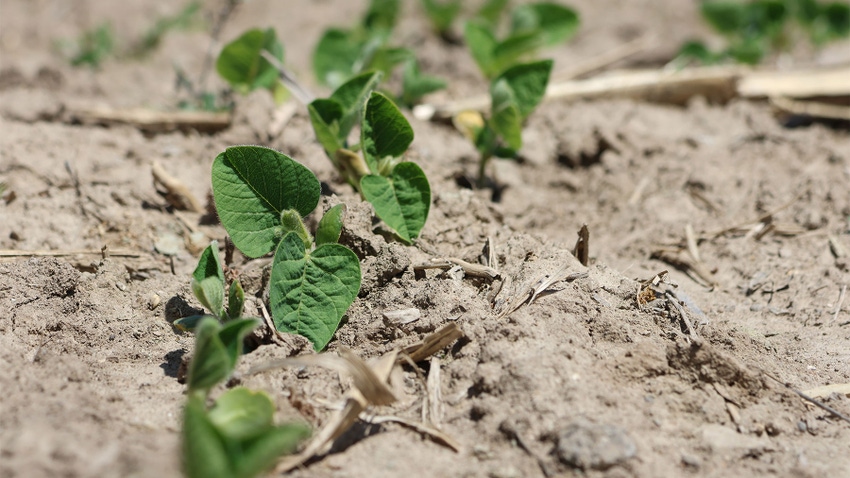
It is no longer a question of whether to plant soybeans early, but what crop management practices will help the crop achieve maximum yield potential.
Farmers continue to push up the planting window for soybeans, often putting seed in the ground before corn. The benefit is increasing the time for the plant to produce more nodes on the stem, which increases pods and ultimately creates more seeds per plant.
In other words, it leads to higher yields — as much as a half-bushel per acre, per day — according to the United Soybean Board.
Conversely, delayed soybean planting equates to yield loss, which varies by region. USB research notes that soybean yield loss from May 1 to May 31 ranges from 2.2% in Georgia to 42% in an irrigated system in Nebraska. Closer to home, that number is 4.5% in Missouri to 11% in Kansas.
To overcome this loss and gain yield, USB worked with 14 university researchers across the country to develop management tips for those early-planted soybeans. Here are five tips:
1. Know when to plant. The timing of placing seed in the ground varies based on location and maturity group. For instance, the Wisconsin Soybean Extension Program research found that farmers in the Upper Midwest can start planting their soybean crop seven to 10 days before planting corn.
Meanwhile, a planting date study by the University of Missouri in the Bootheel region found that April 15 was the best planting date for 4.2 and 4.8 maturity groups, with soybeans averaging 96 and 98 bushels per acre, respectively. However, both stated that ground conditions and crop insurance dates dictate early-planting timing.
2. Wait for suitable soil. Temperature and moisture are key. Soybeans can germinate and emerge when soil temperatures are at or below 50 degrees F. Emergence follows about 15 to 20 days later. Researchers found that when planting when the soil temperature is below 50 degrees, farmers face a higher risk of pathogens infecting the seed.
In addition, planting into wet soil can create compaction and crusting. If it is too dry, there is not enough moisture for germination. Both affect overall emergence. Make sure soil condition and temperatures work with the soybean seed, not against it.
3. Adjust your planting rate. Match your planting rate to environment. For instance, a USB report points to a high-yield environment getting the most out of early-planted soybeans is when final stands are 100,000 plants per acre, versus 135,000 plants per acre in a low-yield environment.
Still, studies like the one out of Purdue show that a final stand of 80,000 plants per acre in 30-inch rows will achieve 100% yield. Why does the lower rate equate to yield? Soybeans fill in the rows with more branches and nodes resulting in more pods.
4. Protect the seed. Early-planted soybeans are often at an increased risk of pathogens such as fusarium, rhizoctonia, phytophthora and pythium, which can kill the seed before germination or cause seedling death. Researchers found these soybeans also may show signs of sudden death syndrome later in the growing season.
Farmers should first choose a variety with resistance, and then use a fungicide seed treatment. Insecticide seed treatments should be considered if the region is prone to bean leaf beetle.
5. Push sulfur. Early planting often happens in cool, wet conditions. Purdue research found a response to sulfur fertility on early-planted soybeans with applied sulfate forms of sulfur like ammonium sulfate, or ammonium thiosulfate.
The data showed that combining some nitrogen with sulfur in these cool conditions helps maintain yield by getting the early-planted soybeans through difficult conditions before they start fixing their own nitrogen. Wisconsin researchers suggest keeping the nitrogen rate lower (30-40 pounds per acre) to keep it from affecting nitrogen fixation later.
Planning for management of early-planted soybeans should start now, in the off-season, to realize higher yields at harvest.
About the Author(s)
You May Also Like






